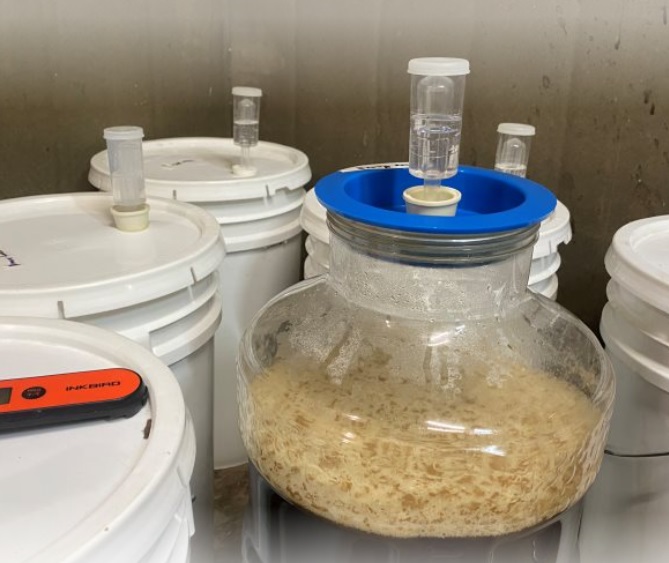I tried this strain because it's cheap and a lot of pro breweries are being forced to use APEX by their bean counters. Pro reviews are mixed, to say the least. Some love it, some like it but can't seem to re-pitch it, others are not very kind to it. Of APEX's strains, the pros seem to like their hazy the best.
Well, I gotta see what this is all about.
Four days ago, I dry pitched a single sachet of APEX San Diego with no oxygen onto a very fermentable step-mashed, strictly pH controlled, APA wort (as one does in 2024). It lagged for about 20hrs, then started fermenting. Then it didn't do a whole lot. It was fermenting, but slowly, really slowly. It dropped from 1.049 to 1.046 over three days, initially at 68F, then at 70F. WTF?! An initial pitch of dry 34/70 or S-189, handled the same way, would be in the high 1.030's by now at 50F. WTF APEX Labs?
If you're going to market your strain as "San Diego" yeast, there are expectations that come along with that description: specifically, a willingness to ferment with a suicide bomber's zeal for the task and a germaphobe's sense of clean. Bog standard Chico yeasts like US-05 would've been past half gravity by now and even famously slow-to-anger BRY-97 would've been snowballing past 1.025 at this point. WTF, APEX Labs?
I pitched a second sachet a few minutes ago because this sluggish performance isn't going to make a good ale and I'm not going to use this strain again, not when there are superior alternatives for pennies more. Might as well get rid of it.
Glad I only bought two sachets.
WTF Apex labs. Get your stuff together.
This is Apex Labs fermentation curve as logged by a TILT

This is a single sachet of S-189 at 50F.

Here we see a single sachet of Cali Chico Yeast.

And this is a second generation pitch of US-05 (got bored looking for an initial pitch)

Get your stuff together, APEX Labs.
Well, I gotta see what this is all about.
Four days ago, I dry pitched a single sachet of APEX San Diego with no oxygen onto a very fermentable step-mashed, strictly pH controlled, APA wort (as one does in 2024). It lagged for about 20hrs, then started fermenting. Then it didn't do a whole lot. It was fermenting, but slowly, really slowly. It dropped from 1.049 to 1.046 over three days, initially at 68F, then at 70F. WTF?! An initial pitch of dry 34/70 or S-189, handled the same way, would be in the high 1.030's by now at 50F. WTF APEX Labs?
If you're going to market your strain as "San Diego" yeast, there are expectations that come along with that description: specifically, a willingness to ferment with a suicide bomber's zeal for the task and a germaphobe's sense of clean. Bog standard Chico yeasts like US-05 would've been past half gravity by now and even famously slow-to-anger BRY-97 would've been snowballing past 1.025 at this point. WTF, APEX Labs?
I pitched a second sachet a few minutes ago because this sluggish performance isn't going to make a good ale and I'm not going to use this strain again, not when there are superior alternatives for pennies more. Might as well get rid of it.
Glad I only bought two sachets.
WTF Apex labs. Get your stuff together.
This is Apex Labs fermentation curve as logged by a TILT

This is a single sachet of S-189 at 50F.

Here we see a single sachet of Cali Chico Yeast.

And this is a second generation pitch of US-05 (got bored looking for an initial pitch)

Get your stuff together, APEX Labs.
Last edited:







